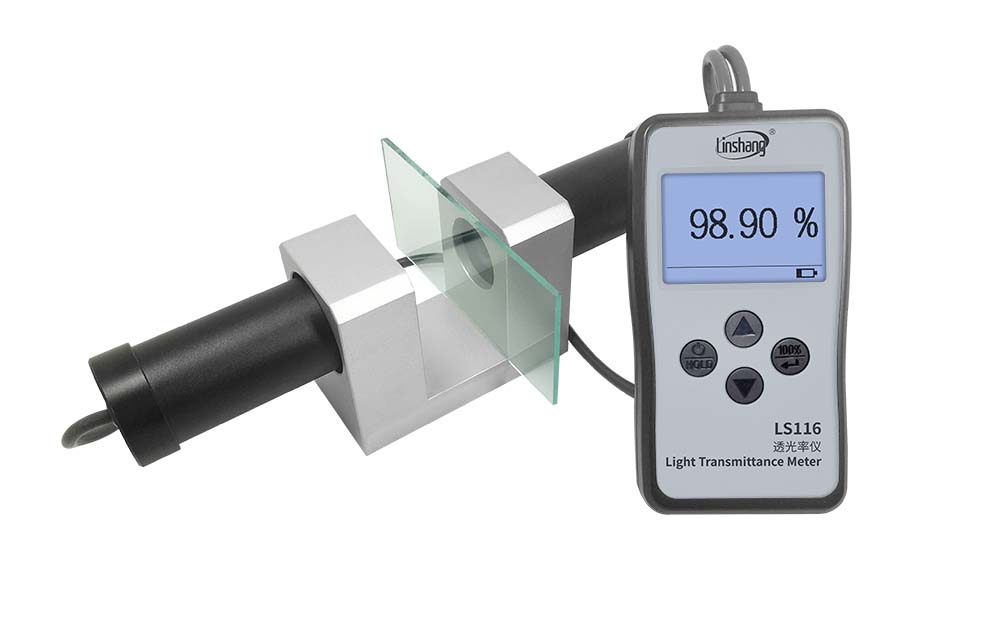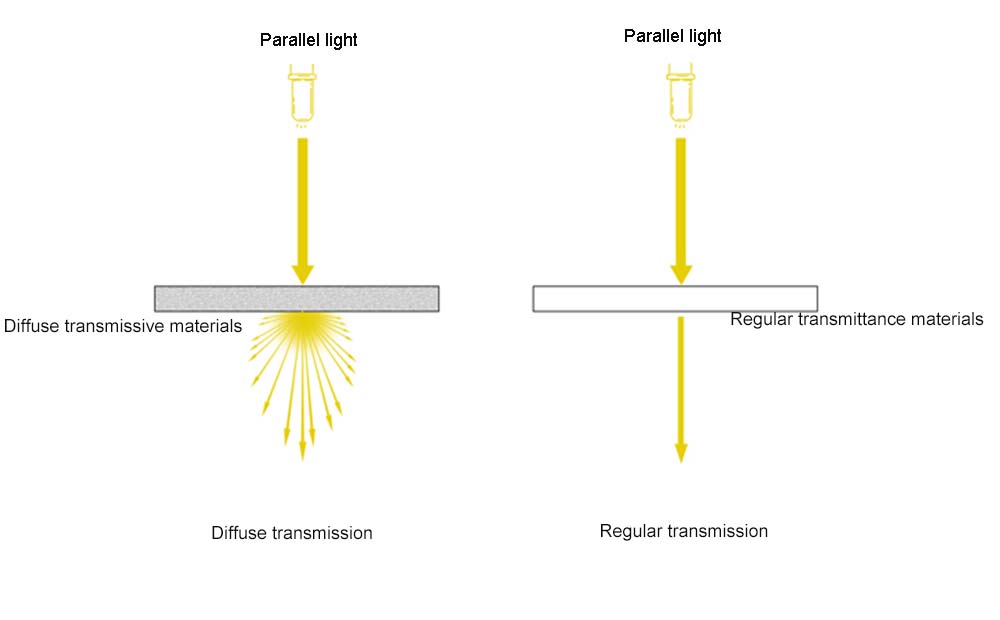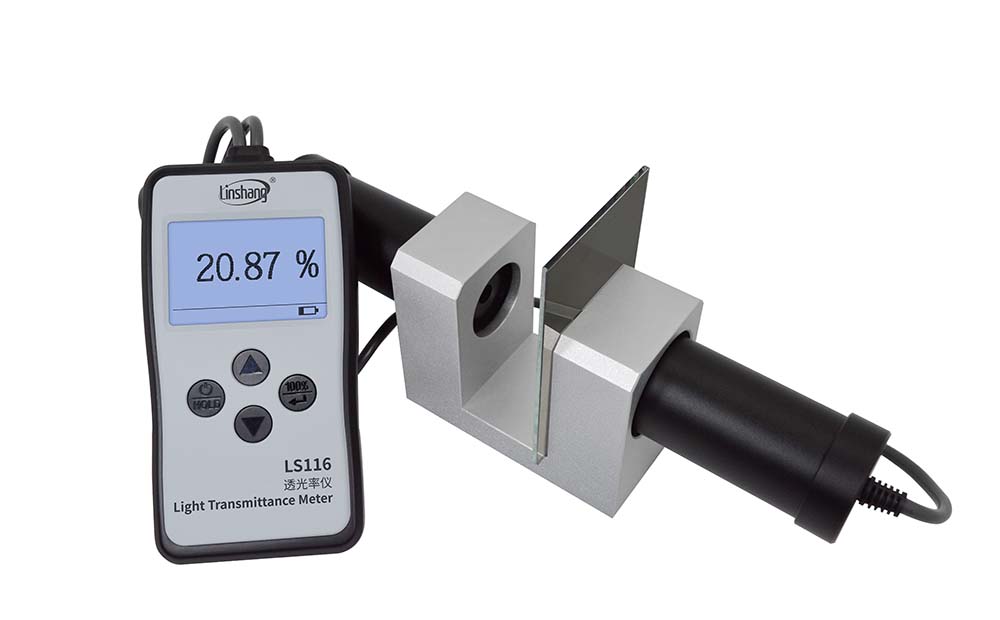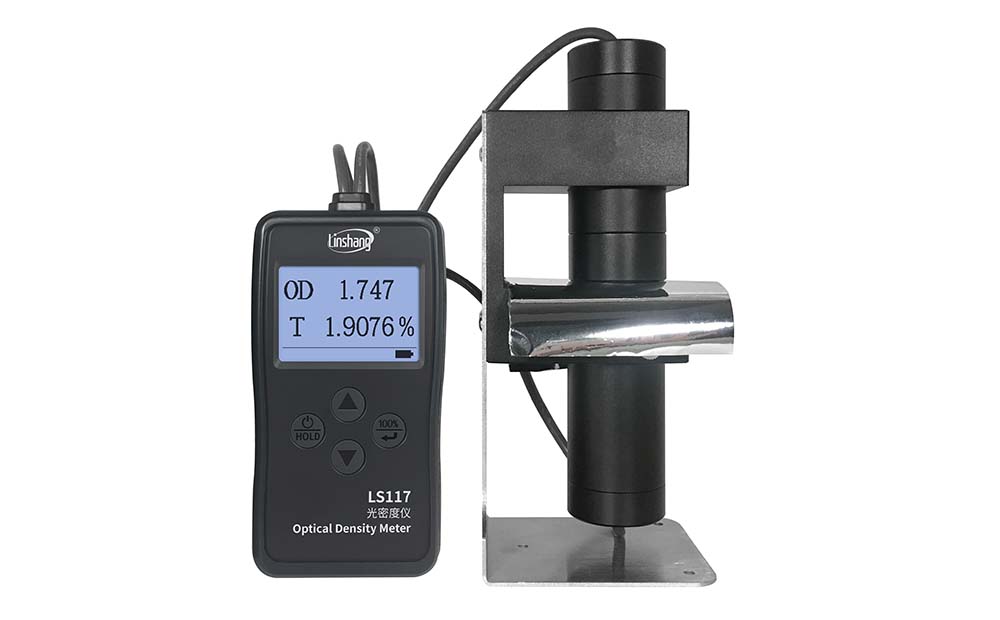How to measure light transmittance?
Light transmission is also known as visible light transmission rate, which indicates the ability of light to pass through the medium. It refers to the percentage of luminous flux through transparent or translucent materials compared to the incident luminous flux. Light transmission is an important parameter indicator for many materials, such as solar film, PC plastic, laminated glass, glass, film, etc.. These materials all have requirements for light transmission. For transparent materials and translucent materials such as opalescent and frosted, we need to measure the light transmittance of these materials with light transmittance meters of different principles.

Due to the different nature of transparent materials and frosted and milky materials, the reactions that occur when light passes through these materials are also different. When light passes through transparent materials, light is transmitted regularly. When the light passes through the creamy, frosted material, the light will produce diffuse transmission. Therefore, the measurement of transparent materials and frosted materials requires the use of professional principles of light transmission meter. So when it comes to this, many people still may not understand. What is regular transmittance and what is diffuse transmittance? Next, we briefly introduce the principles of regular transmission and diffuse transmission.
What is regular transmission and diffuse transmission?
1.Regular transmission
When parallel light is deflected at an angle in the direction of propagation in a material with a smooth surface and uniform internal texture, it is called regular transmission of the material, and also called direct transmission. Simply put, it means that through this material, you can directly see the image behind the material.
2.Diffuse transmission
Parallel light source light through the rough surface of the transmittance material (such as frosted, translucent, milky glass), the transmitted light diffuse open, there is no regular transmission in the macro, called diffuse transmission. When light passes through a diffusely transmitting material, the image we see from behind the material is blurred.

How to measure regular transmittance material transmittance?
For regular transmittance materials, we use the LS116 transmittance meter for measurement. The instrument is designed with parallel light path, the light sources are all incident vertically and will not be affected by the light gathering property of the glass. The use of light sources in line with the CIE bright visual function standard, to ensure that through the measurement institute testing. LS116 transmittance meter accuracy can reach ± 1%, but also to measure more than 99.8% of the high transmission materials.
The instrument is equipped with a fixed base, with two types of measurement, that is, to adapt to test such as automotive front glass on-site measurement, but also adapt to such as the factory fixed station spot transmittance measurement, can be used to test large thickness materials.

How to measure diffuse transmission material transmittance?
The LS117 optical density meter is ideal for measuring the light transmission of diffusely transmitting materials. The instrument is designed with diffuse transmission light path, which can replace the integrating sphere test method. During the test, the diffuse transmittance material collects the transmitted light intensity and reflects it with high intensity several times, so that the light is evenly transmitted to the receiver, so generally speaking, the transmittance of diffuse transmittance material is higher than that of regular transmittance material. LS117 is not only able to test the transmittance of diffuse transmittance materials such as milky white, frosted and matte, but also suitable for the optical density of aluminized film, film, X-ray film, lens ink, etc. test.

Calculation formula of light transmittance
1. Calculation formula of light transmission rate
Light transmittance = (incident light intensity / original light intensity) * 100%
The original light intensity in the formula for calculating light transmittance is generally a fixed value, and the stronger the incident light intensity is, the higher the light transmittance is. Then the light transmittance of the material is better. On the contrary, when the incident light intensity value is smaller, the lower the value of light transmission. Then the material's light transmission is worse.
2. Calculation formula of optical density value
OD=log10 (incident light/transmitted light)
or
OD = log10 (1/transmittance)
Optical density value calculation formula OD for optical density, which is defined as the logarithm of the ratio of incident light to transmitted light or the logarithm of the inverse of the transmittance. The value of light transmittance is a percentage, and the range of values is 0~100%. If all the light is absorbed by the medium, and if the light is fully transmitted. The reciprocal of the transmittance reflects the degree of light absorption by the medium. To facilitate the calculation, the logarithm of the reciprocal of the transmittance is taken as the absorbance.
- TSER,Only Factor To Evaluate Window Performance?
- Transmittance Meter | Is it Necessary to Film Glass?
- Can We set the Test Time of the Solar Film Temperature Meter?
- Painting Thickness Meter For Aluminum Alloy Coating Detection
- What Paint Coating Thickness Meters Are There in China?
- How to Choose the Model of UV Light Meter